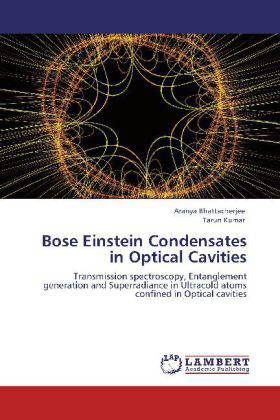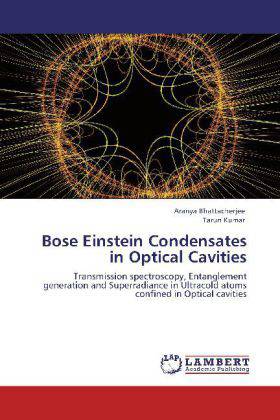
- Afhalen na 1 uur in een winkel met voorraad
- Gratis thuislevering in België vanaf € 30
- Ruim aanbod met 7 miljoen producten
- Afhalen na 1 uur in een winkel met voorraad
- Gratis thuislevering in België vanaf € 30
- Ruim aanbod met 7 miljoen producten
Zoeken
Bose Einstein Condensates in Optical Cavities
Transmission spectroscopy, Entanglement generation and Superradiance in Ultracold atoms confined in Optical cavities
Aranya Bhattacherjee, Tarun Kumar
Paperback | Engels
€ 69,45
+ 138 punten
Omschrijving
The Bose Statistics were first predicted by the Indian Physicist Satyendra Nath Bose in 1924. Later in 1925, Einstein extended the work of Bose to non-interacting particles.The resulting statistics that came out of the work of Bose and Einstein is known as Bose-Einstein Statistics. It took researchers and scientists nearly 70 years to create the first Bose-Einstein Condensate in the laboratory in 1995. Ever since the discovery of BEC, research in this field has flourished very rapidly both theoretically and experimentally. Discovery of BEC has initiated some new topics such as atom optics, atom interferometry, quantum computation, Cavity Quantum Electrodynamics of BEC, precision measurement, low dimensional physics etc.This book explores some of the exciting new developments in a field, which combines Bose-Einstein Condensates and Optical cavities.Particularly, we show how the transmission spectroscopy can be utilized to measure the properties of the BEC in the optical cavity.
Specificaties
Betrokkenen
- Auteur(s):
- Uitgeverij:
Inhoud
- Aantal bladzijden:
- 112
- Taal:
- Engels
Eigenschappen
- Productcode (EAN):
- 9783845429168
- Verschijningsdatum:
- 4/08/2011
- Uitvoering:
- Paperback
- Afmetingen:
- 152 mm x 220 mm
- Gewicht:
- 177 g

Alleen bij Standaard Boekhandel
+ 138 punten op je klantenkaart van Standaard Boekhandel
Beoordelingen
We publiceren alleen reviews die voldoen aan de voorwaarden voor reviews. Bekijk onze voorwaarden voor reviews.








